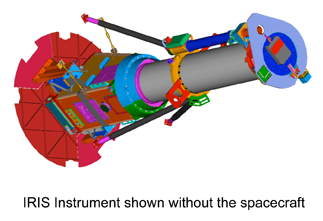IRIS addresses NASA's strategic Goal 3B to “Understand the Sun and its effects on Earth and the solar system,” specifically its Science Question “How and why does the Sun vary?”
An investigation of the solar atmosphere and its role in solar variability and space weather addresses the associated Research Objectives:
“1. Understand the fundamental physical process of the space environment from the Sun to Earth, to other planets, and beyond to the intersteller medium.”
“3. Develop the capability to predict the extreme and dynamic conditions in space in order to maximize the safety and productivity of human and robotic explorers.”
The IRIS science investigation is centered on three themes of broad significance to solar and plasma physics, space weather, and astrophysics, aiming to understand how internal convective flows power atmospheric activity:
The complex processes and enormous contrasts of density, temperature and magnetic field within this interface region require instrument and modeling capabilities that are only now within reach. The IRIS team will use advances in instrumental and computational technology, its extensive experience, and its broad technological heritage to build a state-of-the-art instrument to provide unprecedented access to the plasma-physical processes in the interface region.
